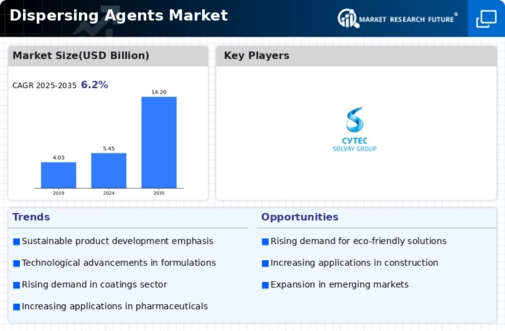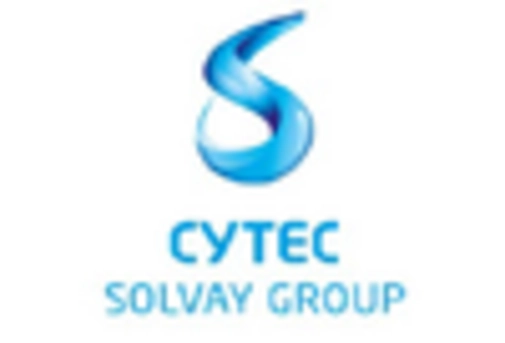Market Share
Dispersing Agents Market Share Analysis
In the competitive landscape of the Dispersing Agents Market, companies employ various strategies to carve out their niche and gain market share. One prevalent approach is differentiation, where companies emphasize unique features or benefits of their dispersing agents compared to competitors. This could involve highlighting superior performance characteristics, such as enhanced stability or compatibility with specific formulations. By positioning their products as distinct within the market, companies aim to attract customers seeking specialized solutions tailored to their needs.
The growing demand from the end use industries is a major factor driving the growth of the global dispersing agents market. Some of the key end-user industries using dispersing agents are building and construction, paints & coatings, pulp & paper, oil & gas, agriculture, pharmaceuticals, and detergents among others.
Another key strategy is cost leadership, where companies focus on offering dispersing agents at lower prices than competitors. This can be achieved through economies of scale, efficient production processes, or strategic sourcing of raw materials. By positioning themselves as the most cost-effective option, companies target price-sensitive customers and aim to capture market share through competitive pricing strategies.
Furthermore, companies may pursue a strategy of market segmentation, wherein they target specific customer segments with tailored dispersing agent solutions. This could involve focusing on particular industries or applications where their products offer the most value. By understanding the unique requirements of different market segments, companies can develop targeted marketing campaigns and product offerings that resonate with customers in those segments, thereby gaining a competitive edge and increasing market share.
Additionally, companies may pursue geographic expansion strategies to capture market share in new regions or countries. This could involve entering emerging markets with high growth potential or expanding into established markets where there is room for growth or where competitors are less entrenched. By expanding their presence geographically, companies can access new customer bases and diversify their revenue streams, thereby strengthening their position in the Dispersing Agents Market.
Moreover, innovation plays a crucial role in market share positioning strategies within the Dispersing Agents Market. Companies that invest in research and development to create novel dispersing agent formulations or technologies can differentiate themselves from competitors and gain a competitive advantage. By continually innovating and introducing new products that address evolving customer needs and industry trends, companies can solidify their position as market leaders and capture a larger share of the market.
Collaboration and strategic partnerships are also essential for market share positioning in the Dispersing Agents Market. By forming alliances with other companies in the value chain, such as raw material suppliers or manufacturers of complementary products, companies can leverage synergies and access new markets or distribution channels. Strategic partnerships can also facilitate access to new technologies or expertise, enabling companies to enhance their product offerings and better meet customer demands, thereby strengthening their competitive position and increasing market share.




Leave a Comment